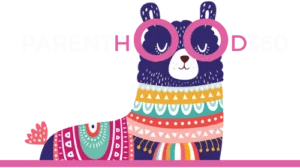Currently Empty: $0.00

Keeping Kids Brains Active During Isolation
So many parents out there are currently at home still trying to juggle your children’s learning, engagement, emotion and behaviour. Now, this can be a really tricky thing to do, especially if you don’t pay oodles of attention to expert reports and the ‘latest findings’ on the news.
Despite being told by experts how long a child’s attention span is, they learn through real experience and using parts of their brain that normally aren’t engaged. In order to help improve your child’s attention span, the first step is to provide what is called ‘Cognitive gear shifts’, which involves splitting an activity into smaller parts and helps direct their emotion & cooperation levels. Secondly, you can think about how your child will tackle each step; sometimes it’s best to give direct instruction, then let them work alone with your supervision just in-case. Other times you could try letting them work things out all on their own. Another option is to get them to call a friend or a grandparent and use Facetime to work together. Here are some short activities that can help you get started if you are stuck and find yourself unable to bring their attention back to you.

STACK of coins memory game
This is a game that works their memory and sequencing skills. Get the attention of child or children. Ask them to watch as you build a pile of coins. You might put down a 20-cent coin first, then another, and another, a 50-cent coin, a 10-cent coin, a 5-cent coin, two more 10-cent coins and a 5-cent coin. Get the kids to look at the pile you’ve built for 20 seconds more, then cover them over with a cloth. Their task is to recreate your sequence of coins. Have plastic bags of coins ready to go!
Copy the picture
This one requires working in pairs. Firstly, draw a relatively simple to copy image, without showing either child. One child is the ‘communicator’ and the other is the ‘drawer’. The communicator may look at the image you have secretly drawn onto a page, but the drawer can’t. Drawers’ must keep their eyes on their page, listen and draw what their communicator says. The communicator can talk as much as they like to help the drawer to draw what’s on your page. They can ask them to restart if they need to. If you want to add some extra difficult, include the rule that communicators must also keep their hands behind their backs. The task is for the communicator to use language that helps the drawer accurately draw what you have drawn on your page.
Visual ‘spot the difference’ games, online
‘Spot the difference’ and ‘odd one out’ games are fabulous for getting kids of all ages (adults too) to pay attention to small details. You can adapt them to your child’s age and ability, and they have the benefit of being easily available online. Don’t forget online Where’s Wally? Or Where’s Waldo or the find the panda pictures.
Kim’s Game
Place between twelve to twenty-five small items such as a pencil, paper clip, watch, book, shoe, an apple, stapler, toy car, etc. on a tray. (For older and more capable kids, go for closer to 25 items) Cover the tray with a large towel. Then bring your kids into the room, and uncover the tray, revealing the items. You may wish to touch and name each item, so the kids can see and hear all of the objects. Once done, cover the items again. Next, hand them a pen or pencil and a piece of paper so they can record every item they can remember. The objective is to quietly record every item on the tray. Give them five minutes.

Backwards counting
Counting numbers backwards plunges kids right into the moment! For younger kids, count backwards from 10 or 12 – using a clock as a visual aid for the young ones. For the slightly older kids begin at 13 and count backwards by 2’s. Or, jump up to 50 or 51 and count back by 5’s. For even more difficulty, start at 113 and count backwards by 7.
Word Count
Steal or write a paragraph a short paragraph, then read it to them. Afterwards, hand a printed version of the paragraph to them. Ask your kids to count how many words there are in the paragraph in total. Then, ask them to keep a tally of how many times particular words are repeated. Help them with their organisational skills by suggesting colour coding. It’s impossible to let your mind wander when you’re paying such close attention to detail. Try these…
Yellow butter, purple jelly, red jam, black bread.
Spread it thick, say it quick!
Yellow butter, purple jelly, red jam, black bread.
Spread it thicker, say it quicker!
Yellow butter, purple jelly, red jam, black bread.
Don’t eat with your mouth full!
How much wood would a woodchuck chuck
if a woodchuck could chuck wood?
He would chuck, he would, as much as he could,
and chuck as much wood as a woodchuck would
if a woodchuck could chuck wood.

